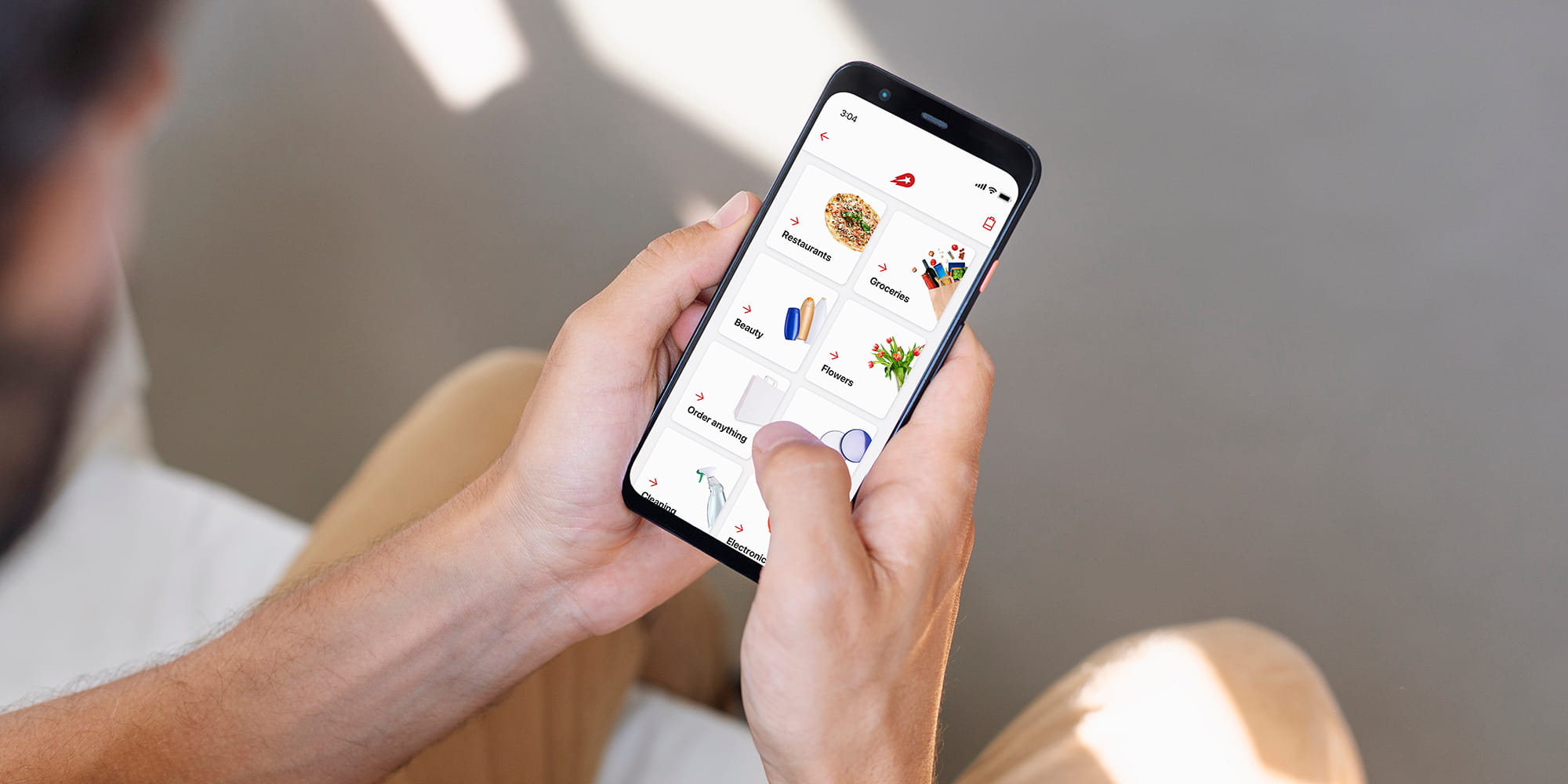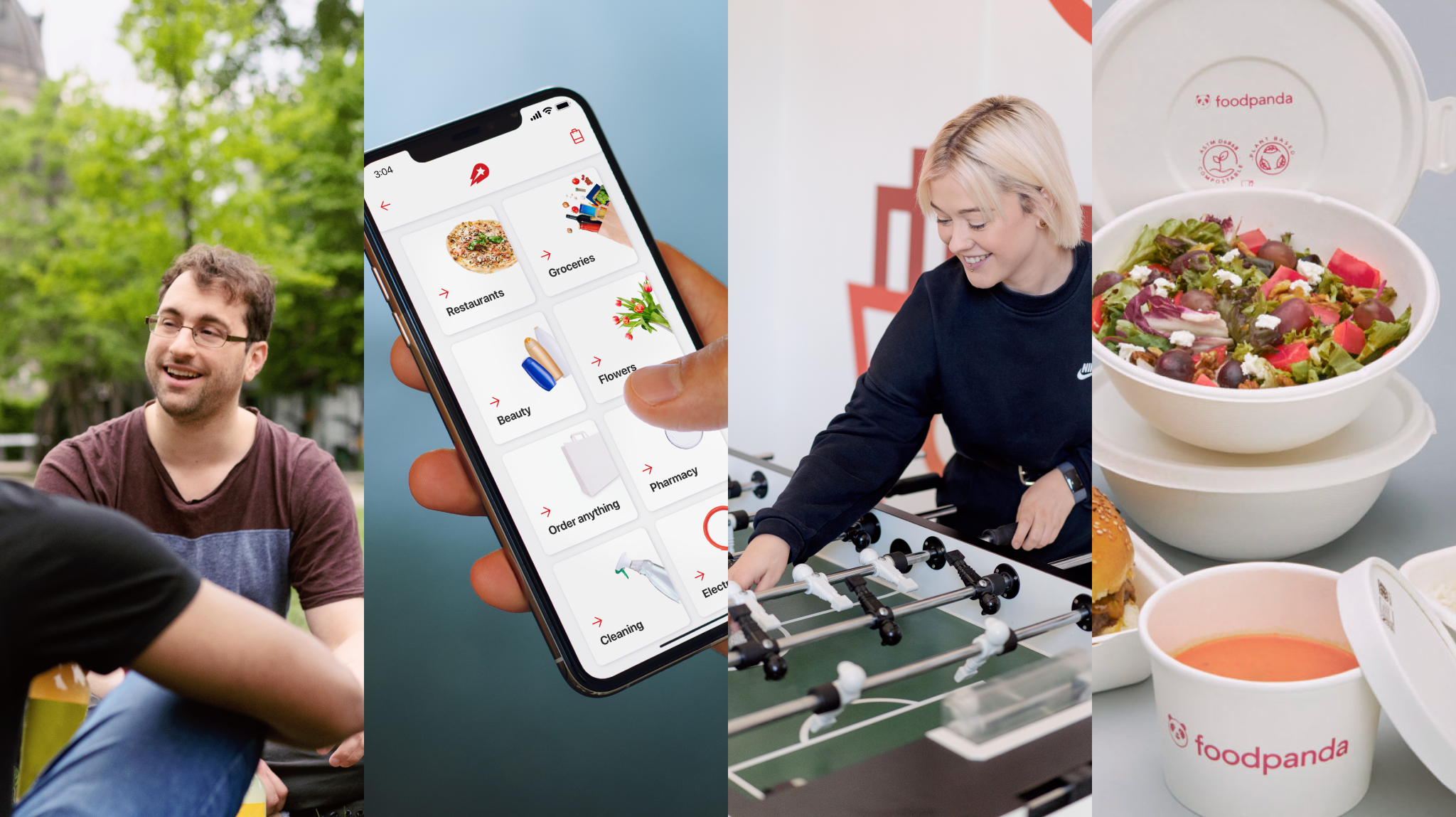Business & Innovation
- April 8, 2021Quick commerce: what it’s like to play a part in shaping the delivery industry
In 2020, quick commerce, the next generation of e-commerce, proved to be one of the main answers to some fundamental changes in customer behaviours and needs that were occurring. At Delivery Hero, we believe that quick commerce is not only changing the foundations of the delivery industry and of the commerce industry, but that it is also further reshaping customers’ experiences as a whole.
We wanted to learn more about what it’s like to be part of this movement and sat down with Milena Lazarevska, VP Commercial Quick Commerce at Delivery Hero.
Milena, you are now acting as Vice President, Commercial at DH. What does a normal day look like, if you have any of those?
The only ‘usual’ component of all my working days are a lot of Zoom calls. Other than that, I would say that my role is pretty varied: one day I’m deep diving into the assortment in Uruguay and helping the local team decide whether to stock more Alfajores or other types of snacks, the next I am supporting our Kuwait team with their pricing strategy, or building a business plan with some of our main brand partners, or hosting an onboarding session for our new quick commerce team joiners. I also spend quite some time in interviews to fill some of the many open roles in the quick commerce team. It’s never twice the same, which is really exciting.
You have been working in retail for a while now – how have you seen customers’ habits evolve over the years and when did you fully grasp the potential of quick commerce?
When I think about customer behaviour trends these days, I always distinguish between pre- and post-COVID times.
- Pre-COVID, there was already a definite shift towards more convenience:
- Customers started to move away from buying all they needed for the week ahead in one go, and moved towards visiting convenience stores in busy streets to shop smaller baskets several times a week.
- In terms of products and assortments, customers started buying more meal kits and ready made meals – anything that sped up the process of cooking at home.
- Another trend that was slowly emerging was online shopping
In the end, both of these emerging trends got accelerated with the pandemic. With the rise of quick commerce, we’re tending to both these needs for convenience and online experience. You don’t need to make a list and then go to the grocery store to buy what you need anymore. I strongly believe that customers will soon start wondering what they did before this service existed – you can get what you need when you need it, conveniently delivered to your door.
I strongly believe that customers will soon start wondering what they did before this service existed – you can get what you need when you need it, conveniently delivered to your door.
Milena Lazarevska, VP Commercial Quick Commerce at Delivery Hero
In the past months, we have broadened our offer to deliver more than food. Could you walk us through the current verticals (categories) we developed, and give us a sneak peek into what’s coming next?
Our main vertical is groceries – simply because grocery retail is a large market that is not very digital yet. Next to that, we partner with our customers’ favourite grocery retailers, both supermarkets and convenience stores. We also partner with smaller retailers like kiosks in South America, flower shops and pharmacies in the Middle East, and a very wide variety of retailers in Asia. We are always innovating and experimenting so stay tuned about any new directions we may be taking!
Next to partnering with local stores, our quick commerce operations rely heavily on Dmarts: delivery-only supermarkets or warehouses that are located mostly in cities and optimized for delivery. Can you tell us how Dmarts are organized and look like on the inside?
It’s actually not too dissimilar from walking into a convenience store – but there are differences. Grocery stores and convenience stores are optimized for customer shopping experience: products are grouped according to categories so that customers can find them easily.
In traditional stores, the aisles are wide to accommodate many customers and large trolleys. Our stores can be more tightly packed as we don’t have walk-in customers, and are organized in such a way to make the picking very efficient. With our proprietary technology, we are able to direct our pickers around the stores in the fastest way and pick an order in just a few minutes.

People seem to be using the service a lot! What items are most commonly ordered right now?
It is quite similar to how you would envision ‘top up’ grocery shopping baskets to look like: you can find the usual suspects such as bananas, milk eggs, etc. What’s also very popular are snacks, drinks, ice cream and beer – everything that is linked to impulse buying.
Have you noticed regional differences in how quick commerce and Dmarts are operating locally?
We see quite a few regional differences, in the composition of the baskets but also in the basket size and purchase frequency. When it comes to the assortment and choice of products, everything is tailored to local taste – we’re very mindful that what we sell in Kuwait is particularly relevant to our Kuwaiti customers. We are not copy pasting what we’re doing in Finland there.
It’s great for us to work in a company with such a global footprint, where a trend detected in one market can be applied and fast tracked in another so that we continuously become better.
At Delivery Hero, we still see a lot of potential for growth when it comes to quick commerce and Dmarts – what is your personal vision for the coming years?
It’s safe to say that we’re only getting started with quick commerce. Apart from our global expansion, we continue to innovate on all parts of the business. So much innovation is coming in this space that will transform the business in the 5-10 upcoming years. In the future, I see in my wildest dreams potential for us to hydroponically grow herbs and salads in our Dmarts, use a 3D printer to create plant-based meat alternatives, and get our products delivered by automated vehicles or drones.
If you want to know more about how Milena and her team are revolutionizing the industry through quick commerce, listen to our HeroVoice episode on the topic!






Share